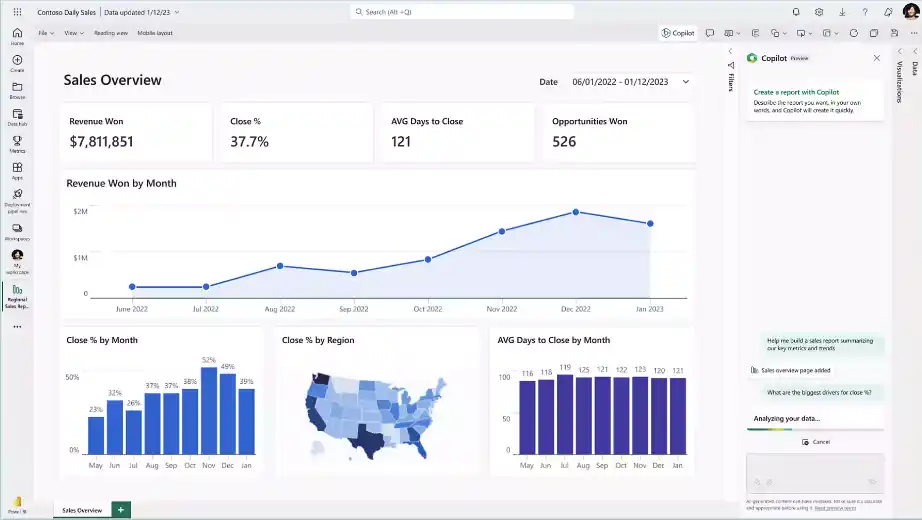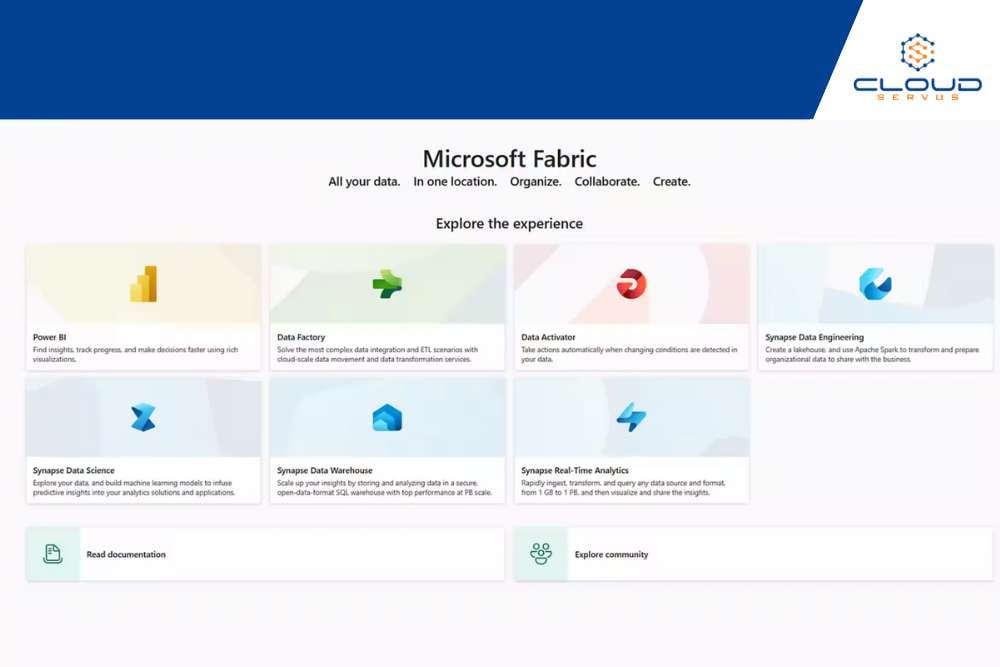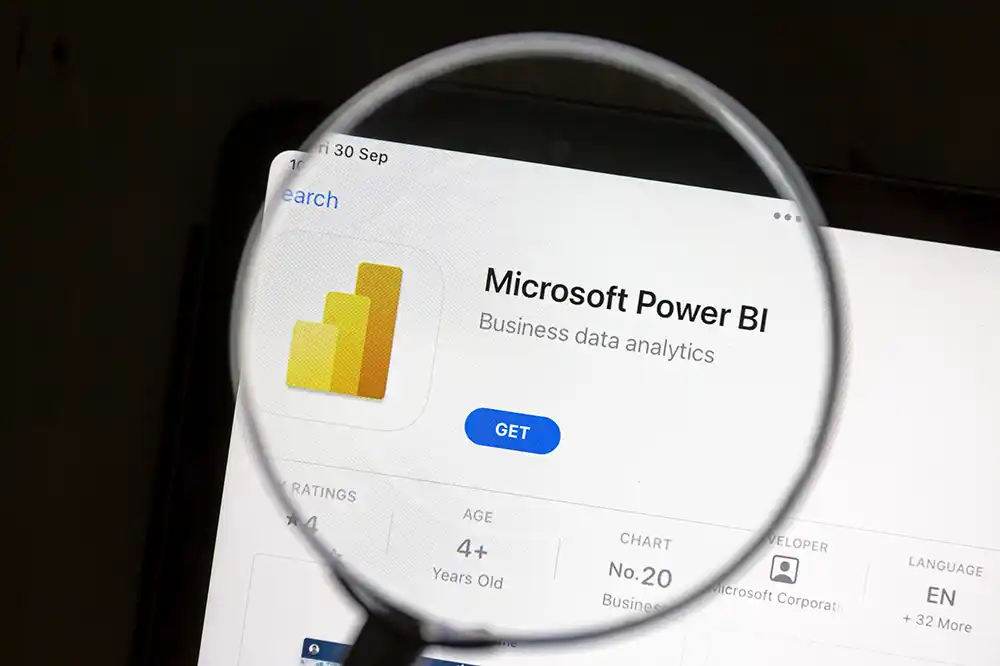Microsoft Fabric: The New End-to-End Analytics Platform
Microsoft just launched their new comprehensive analytics platform, Microsoft Fabric, designed to revolutionize the way organizations harness the...
4 min read
cloudservuscom Oct 17, 2023 9:15:19 AM

For all of you out there wondering what the freshly launched Microsoft Fabric means if you’re already using Power BI, stay put.
We’re going to cover what the impact of Microsoft Fabric is on your Power BI capabilities and what actions you need to take to ensure you’re leveraging your Microsoft tools to their fullest.
Existing Power BI users are already familiar with this powerful platform and its ability to simplify the path to data-driven insights and decision-making thanks to interactive visualizations, easy data connectivity, mobile accessibility, and streamlined collaboration.
But you’re not getting the most value from Power BI if you’re not taking advantage of Fabric, the new end-to-end analytics platform from Microsoft. Fabric’s purpose is to create holistic, synchronized SaaS experiences for data integration, data engineering, data science, business intelligence, real-time analytics, data movement, and data warehousing.
Azure Data Factory, Power BI, and Azure Synapse Analytics are integrated as one cohesive product in Fabric, creating a one-stop shop for the entire analytics lifecycle and a foundation for AI.
Microsoft Fabric’s integration with Power BI enhances and extends the Power BI platform, offering better performance and scalability for enhanced analytics and visualization.
Existing Power BI customers can keep using all of the same functionalities and capabilities they’re already using without experiencing any disruption. If you’re a Power BI Premium customer, you can just turn the Fabric tenant setting on in your Power BI admin portal to start accessing extended capabilities. There’s no need to migrate content from Power BI to Fabric.
We’ve discussed Microsoft Fabric extensively here, but it’s important to reiterate that Fabric’s experiences revolve around OneLake, Microsoft’s multi-cloud data lake. OneLake is like Microsoft 365’s One Drive, but for data instead of documents. It offers a unified storage system for all of the different workloads within Fabric. Plus, the ability to put your data into a lakehouse and then leverage it across the various engines in Fabric can help drive Power BI usage.
With the centralization of tenant and capacity level administration for all of the different Fabric experiences, the Power BI admin portal is now the Fabric Admin portal. The Power BI administrator role has also been renamed to Fabric Administrator to reflect the evolving responsibilities of the role.
Copilot with Power BI (in preview) incorporates large language models that introduces a conversational element to how users derive data insights. Users can simply describe the type of insights and visualizations they want in everyday language and Copilot can generate customized reports from the right data. Its generative AI capabilities and features are designed to be infused into different analytics workflows.
There’s a lot of buzz around Fabric’s Git integration, a version control system, that improves collaboration features for Power BI. The Git integration enables better teamwork between developers and other teams working on Power BI content and helps mitigate data conflicts by providing a single, trusted version of the content. By working with the latest and most accurate data, the entire application lifecycle is also easier to manage from development testing to deployment.
Because Microsoft Fabric unifies Power BI, Synapse, and Data Factory in a SaaS platform, it provides a centralized approach to governance, compliance, security, and administration. This aims to resolve the complexity typically associated with developing analytics solutions and disparately managing things like security, workspaces, user roles, and data ingestion.
Microsoft Fabric marks a significant change to Power BI and there’s a lot of new features that can help optimize your analytics workflows and processes, as well as how everyone across your organization consumes data insights.
Microsoft consultants can help you get a running start with Fabric so you can get more from Power BI - and the entire suite of Fabric features. CloudServus is an experienced, top-tier Microsoft Solutions Partner with specialized consultants who can streamline your Microsoft Fabric journey and experience.
We can even help you determine if Fabric is the right solution for your particular objectives, needs, and analytics environment. Our services are designed to maximize your Power BI investment and harness Fabric’s full potential - from integration with other systems and establishing security policies to best practices and troubleshooting.
Reach out to us at CloudServus to get started with Microsoft Fabric or learn more about the impact of Fabric on Power BI.

Microsoft just launched their new comprehensive analytics platform, Microsoft Fabric, designed to revolutionize the way organizations harness the...

It’s more important than ever today for businesses to make data-driven decisions. But while 90% of organizations indicate that data is increasingly...

As Microsoft rolls out its comprehensive analytics platform, Microsoft Fabric, existing Power BI users face a pivotal moment of transition. This...